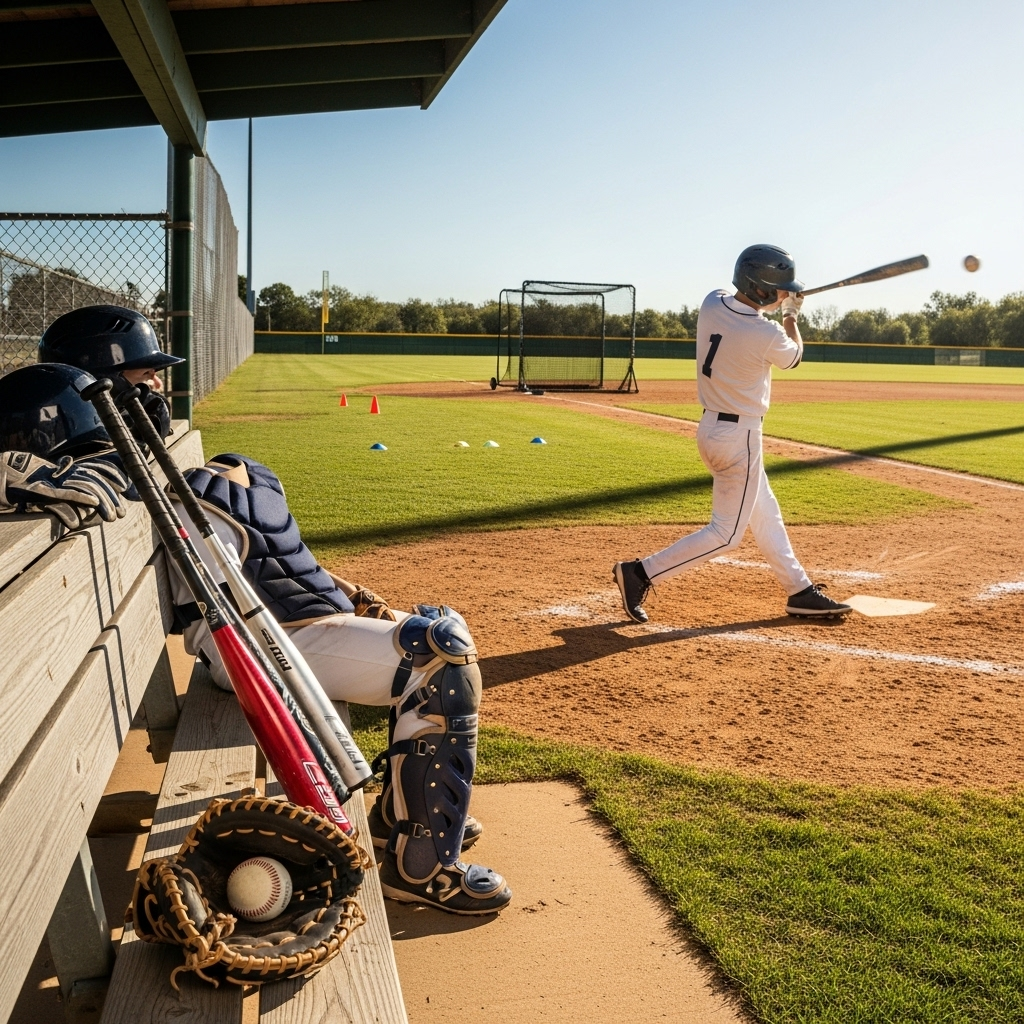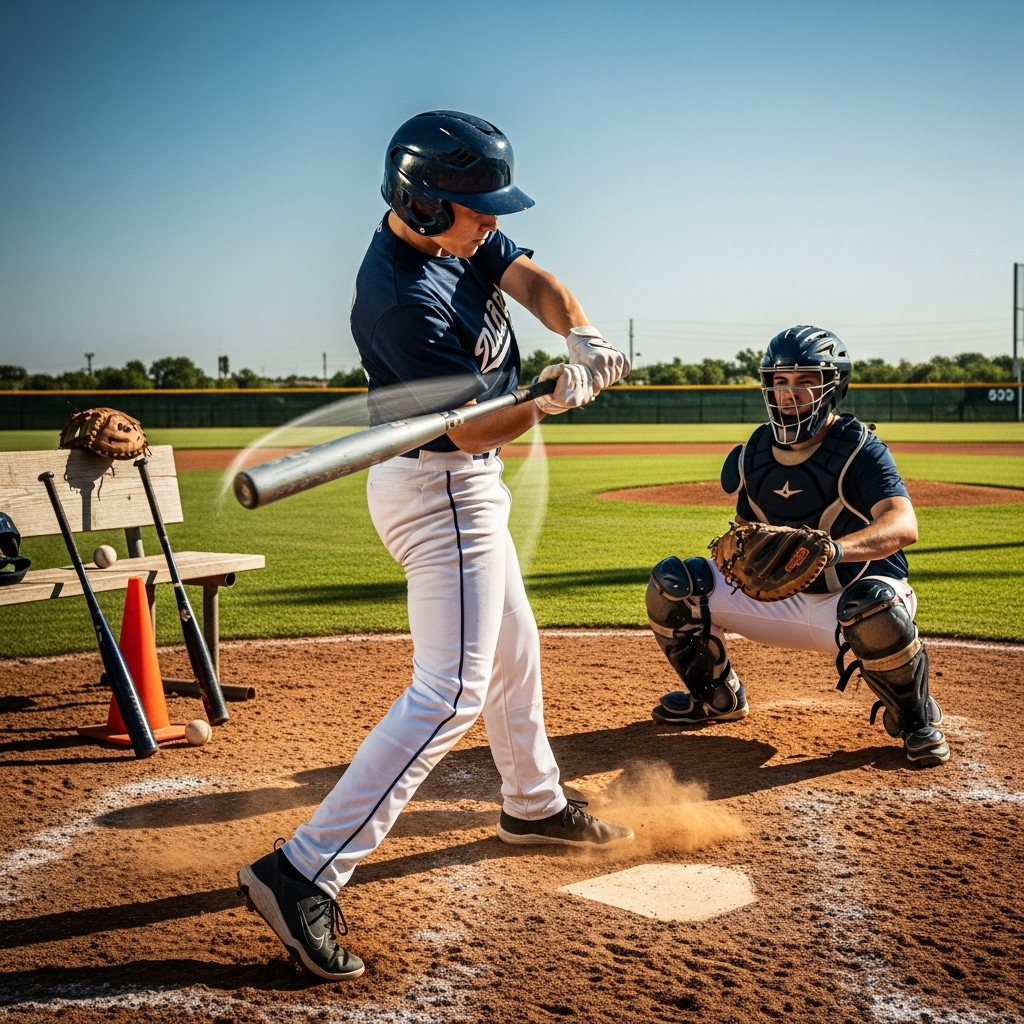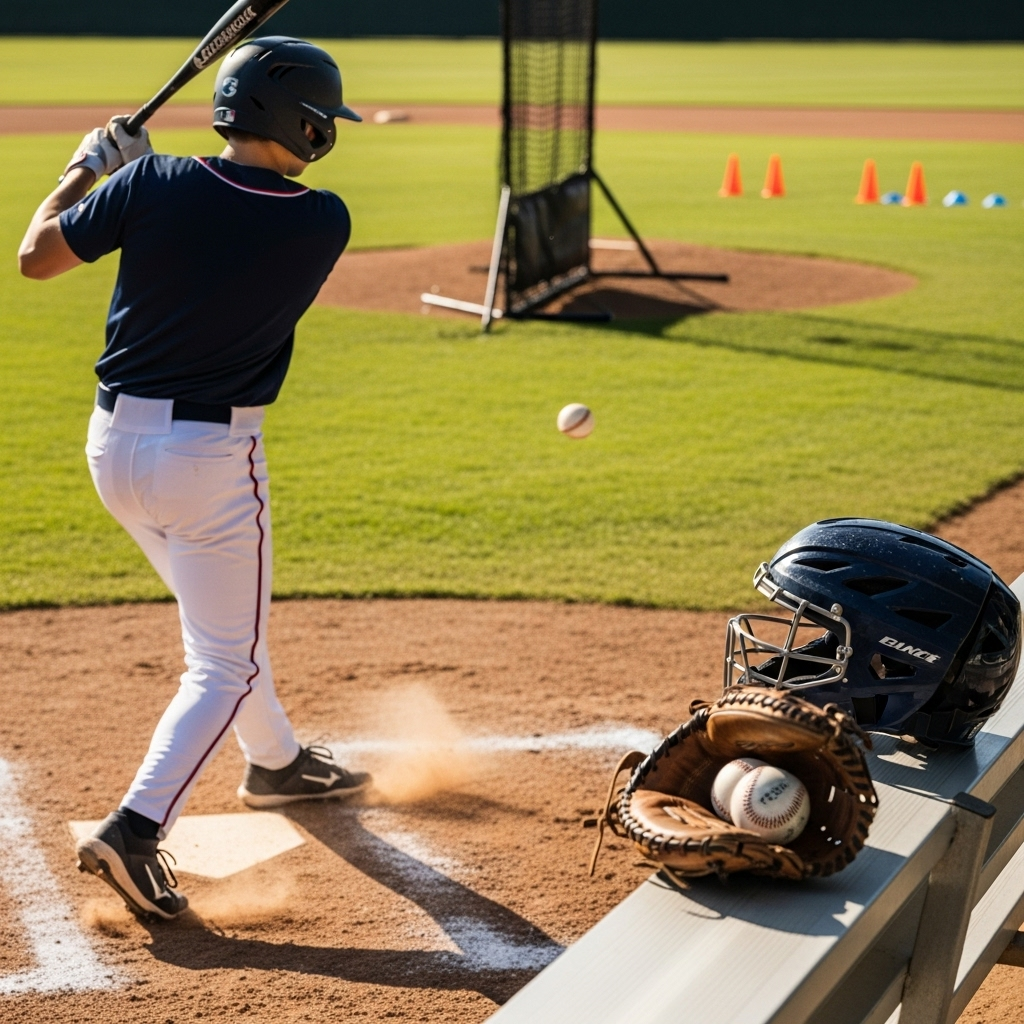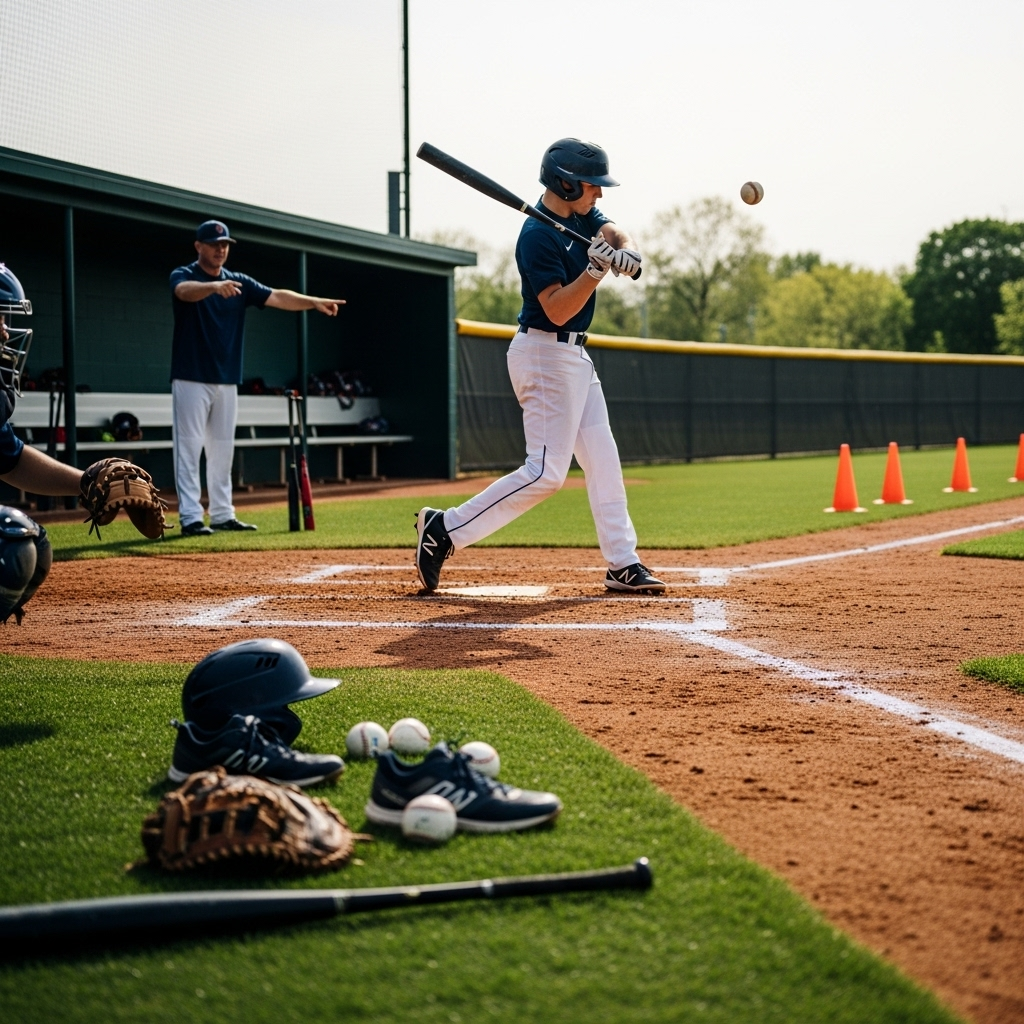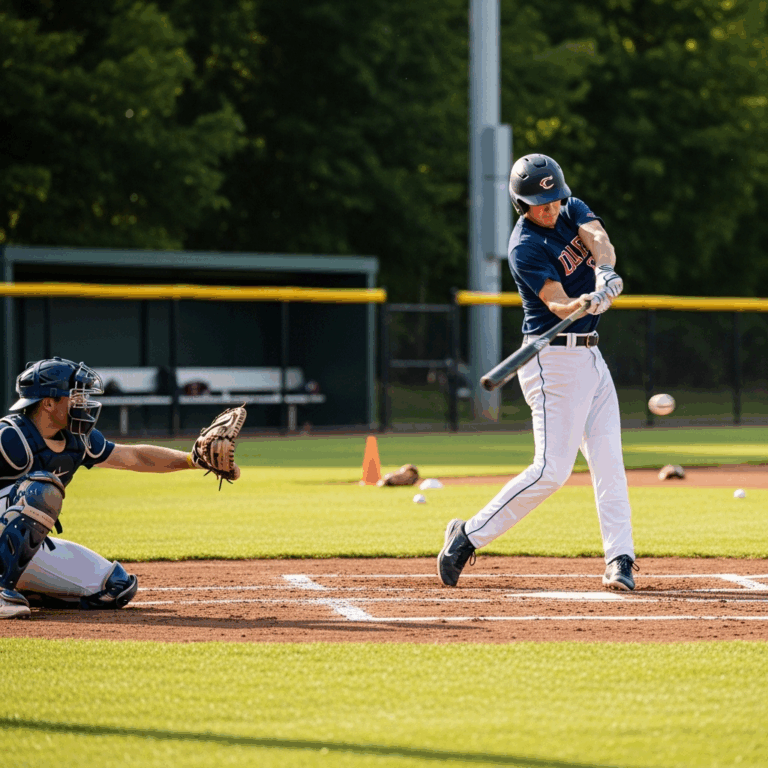Finding the right baseball bat for high school is crucial for performance and development. This guide will help you understand bat materials, sizes, weights, and key features to make an informed choice, ensuring you step up to the plate with confidence and the best possible tool for your game.
Choosing the perfect baseball bat for high school ball can sometimes feel like a tricky pitch. You want a bat that feels just right in your hands, one that helps you deliver solid hits and makes you feel more confident at bat. It’s not just about picking the coolest-looking one; the right bat can truly boost your performance and enjoyment of the game. This guide is here to make that decision simple and clear, like a perfectly executed double play. We’ll walk you through everything you need to know, from bat materials to the perfect fit, so you can step up to the plate ready to make a difference.
Baseball Bats For High School: Your Ultimate Selection Guide
Welcome to FriskMode! As a player and gear fanatic, I know how important it is to have quality equipment. For high school baseball, your bat is your primary weapon. Picking the right one isn’t just about power; it’s about control, comfort, and making the most of your swing. This guide is designed to help you, the player, or your parents and coaches, understand the ins and outs of selecting the best baseball bats for high school. We’ll cover the key factors you need to consider, so you can make a choice that feels right and performs even better.
Why Bat Selection Matters for High School Players
High school is a critical time for player development. The competition gets tougher, and the game demands more from you. The right bat can be a game-changer. It’s not magic, but a well-matched bat will:
- Improve bat speed.
- Help you make better contact with the ball.
- Increase your confidence at the plate.
- Potentially lead to longer hits and more RBIs.
Conversely, a bat that’s too heavy, too light, or made of the wrong material can hinder your progress. It might make your swing feel awkward, reduce your bat speed, or even lead to injuries. Understanding the nuances of baseball bats for high school players ensures you’re setting yourself up for success, not frustration.
Understanding Baseball Bat Materials
The material of your bat significantly impacts its feel, sound, performance, and durability. For high school, you’ll primarily encounter two main types:
1. Aluminum/Alloy Bats
These are the most common bats for high school and are a great starting point for many players. They offer a good balance of power, durability, and affordability.
- Pros:
- Durable and can withstand a lot of use.
- Consistent performance.
- Often more forgiving on off-center hits (larger sweet spot).
- Generally less expensive than composite bats.
- Legal in most high school leagues (check specific league rules).
- Cons:
- Can vibrate more when hitting the ball off-center (“barrel sting”).
- May not offer the same “pop” or trampoline effect as composite bats.
- Performance can be affected by temperature (colder temps can reduce pop).
Alloy bats are made from various aluminum alloys, each offering slightly different properties. Some popular alloys include:
- T6 Alloy: A common and reliable standard.
- SC200, ALX50: These are proprietary names used by manufacturers, often indicating a strong, responsive alloy with good durability.
If you’re a beginner or an intermediate player on a budget, an alloy bat is an excellent choice. They are forgiving and reliable, allowing you to focus on developing your swing mechanics.
2. Composite Bats
Composite bats are made from layers of carbon fiber or other composite materials. They are known for their advanced technology and superior performance, but often come with a higher price tag and specific regulations.
- Pros:
- Offer excellent “pop” and trampoline effect for increased ball exit speed.
- Often have a larger sweet spot than alloy bats.
- Lower vibration, providing a more comfortable feel.
- Can be designed for specific swing weights and barrel profiles.
- Cons:
- Significantly more expensive.
- Require a break-in period to reach peak performance.
- Can be more susceptible to damage in cold weather.
- Subject to strict regulations in many high school leagues (e.g., BBCOR standards, specific certifications).
- Performance can degrade over time.
When considering composite bats for high school, it’s crucial to check the official rules of organizations like the National Federation of State High School Associations (NFHS). Many leagues have specific certification stamps, like the BBCOR mark, that bats must have to be legal.
Understanding Baseball Bat Regulations (BBCOR)
High school baseball has specific standards to ensure fair play and player safety. The most important one for bats is the BBCOR (Batted Ball Coefficient of Restitution) standard. Introduced to make non-wood bats perform more like wood bats, it aims to:
- Reduce the trampoline effect, preventing bats from launching the ball too fast.
- Level the playing field between different types of bats.
- Promote safety by reducing the risk of players being hit by excessively fast-traveling batted balls.
For high school play governed by NFHS rules, bats must meet these BBCOR standards. You’ll typically find a BBCOR certification stamp on the bat itself. Any bat without this stamp is likely illegal for use in high school games. While composite bats can meet BBCOR standards, it’s essential to confirm the certification.
Bat Sizing: Length and Weight
Getting the right size bat is paramount. This involves understanding both the length and the weight of the bat, and how they relate to your physical attributes.
1. Length
Bat length is measured in inches. The correct length allows you to comfortably swing the bat with good mechanics. Too long, and you’ll drag it; too short, and you might not get the reach you need.
How to determine the right length:
- Method 1 (Reach): Place the bat on its end on the ground. Stand the bat next to your leg. If the end cap of the bat reaches your wrist or just below it, the length is likely appropriate.
- Method 2 (Armpit): Hold the bat out to your side, parallel to the ground, with the barrel facing forward. If you can comfortably reach the end cap with your fingertips while holding the handle, it’s a good length.
- Consider Your Height and Age: Generally, taller players can handle longer bats. High school players typically use bats ranging from 28 inches to 34 inches.
General Length Guidelines for High School:
These are approximate and depend on player size:
- Shorter/Lighter Players (5’0″ – 5’6″): 28-30 inches
- Average Height Players (5’6″ – 5’10”): 30-32 inches
- Taller/Stronger Players (5’10” and up): 31-33 inches (sometimes 34 inches for elite hitters)
2. Weight and Drop Weight
Bat weight is crucial for swing speed. For high school, most bats are measured by their drop weight. The drop weight is the difference between the bat’s length and its weight (e.g., a 30-inch bat weighing 27 ounces has a drop weight of -3). All BBCOR bats must have a drop weight of -3.
- Drop Weight: In high school, the standard is a drop of -3. This means a 33-inch bat will weigh 30 ounces, a 32-inch bat will weigh 29 ounces, and so on. This standardization helps ensure fair competition and safety.
- Actual Weight: While the drop is fixed at -3, players should choose an actual weight they can swing quickly and comfortably. A bat that feels too heavy will slow down your swing. A bat that’s too light might not offer enough mass to drive the ball effectively.
How to determine the right weight:
- The Arm Test: Hold the bat out in front of you, parallel to the ground, with your arms extended. How long can you hold it there comfortably before your arm starts to fatigue or shake significantly? If you can only hold it for 20-30 seconds, it’s likely too heavy for you to swing with speed.
- Live Swing Test: The best way is to try swinging different weights on the field. Focus on speed and control, not just raw power. A faster swing with a slightly lighter bat often results in better contact and more consistent results than a slow swing with a heavier bat.
- Consistency: Aim for a weight that allows you to swing aggressively without sacrificing your form.
General Weight Guidelines (for BBCOR -3 drop):
- Lighter Players (e.g., 120-140 lbs): Might start with 28-30 ounces.
- Average Players (e.g., 140-170 lbs): Typically use 30-32 ounces.
- Stronger Players (e.g., 170+ lbs): May use 31-33 ounces.
Bat Barrel Diameter
For high school, the standard barrel diameter is 2 5/8 inches. This is a regulated size, and you’ll find this on most BBCOR-stamped bats. Older bats or bats made for different leagues (like Little League or youth leagues) might have smaller barrel diameters (e.g., 2 1/4 inches).
A larger barrel diameter generally means a larger sweet spot, which can be more forgiving on off-center hits. However, the BBCOR regulations and the -3 drop weight ensure that even with a 2 5/8-inch barrel, the “trampoline effect” is controlled.
Bat Swing Weight (Balance)
Bats can have different balances, affecting how they feel when you swing them. This is sometimes referred to as the “swing weight,” though it’s distinct from the actual physical weight.
- End-Loaded Bats: The weight is concentrated more towards the barrel end. These bats can feel heavier at the start of the swing but can generate more power for players with strong wrists and fast swing speeds who can manage the momentum.
- Balanced Bats: The weight is distributed more evenly throughout the bat. These feel lighter in the hands and are easier to swing quickly.
For most high school players, especially those still developing their strength and swing mechanics, a balanced or slightly end-loaded bat is usually recommended. An end-loaded bat might be suitable for a very strong, experienced hitter who already has excellent bat speed and wants to maximize power.
Key Features to Look For
Beyond material and size, consider these features:
- Sweet Spot Size: Look for bats known for having a larger sweet spot, often achieved through advanced alloy or composite construction and specific barrel designs. This increases your chances of solid contact.
- Grip: A comfortable, non-slip grip is essential. Most bats come with a standard rubber grip, but you can always add an overgrip for a more personalized feel.
- End Cap: The end cap plays a role in weight distribution and aerodynamics. Some modern bats feature advanced end cap designs to optimize swing speed and balance.
- Handle: The handle should feel solid and comfortable in your hands. Some players prefer a thinner handle for better control, while others like a thicker one for a more substantial feel.
- Connection Piece (for two-piece bats): If you’re considering a two-piece composite bat, the way the barrel and handle are connected is important. Innovations here aim to reduce vibration and optimize energy transfer.
Top Baseball Bat Brands for High School
Several reputable brands consistently produce high-quality baseball bats for the high school market, all adhering to BBCOR standards. Here are a few of the most popular and well-regarded:
- DeMarini: Known for their performance composite and alloy bats, often with a focus on power and feel.
- Easton: A long-standing leader in baseball gear, Easton offers a wide range of alloy and composite bats known for durability and performance.
- Louisville Slugger: A classic brand in baseball, they produce reliable alloy and composite bats that are popular at all levels.
- Rawlings: While also famous for gloves, Rawlings makes excellent bats, often focusing on balance and consistent performance.
- Axe Bat: Distinguished by their unique axe-shaped handle, designed to improve swing mechanics and reduce vibration.
When choosing, look for their latest BBCOR-certified models. Always check reviews and, if possible, try swinging different brands to see what feels best.
How to Choose Based on Player Type
Consider your natural strengths and weaknesses as a hitter:
- The Power Hitter: If you naturally generate a lot of bat speed and are strong, you might lean towards a slightly more end-loaded bat (still within the BBCOR -3 spec) to maximize power. Ensure you can still swing it fast enough.
- The Contact Hitter: If your strength is making solid contact and hitting for average, a more balanced bat will help you maximize bat speed and keep your hands quick through the zone.
- The Developing Hitter: For younger players or those still refining their swing, a balanced bat is often the best choice. It promotes good mechanics and helps build confidence through consistent contact.
- The All-Around Hitter: Most players fall into this category. A well-balanced bat with a good sweet spot offers the versatility to hit for both power and average.
Cost vs. Value: Making a Smart Investment
Baseball bats for high school can range from around $100 for a decent alloy model to $400 or more for top-tier composite bats. It’s essential to find a balance between your budget and what you need.
Alloy Bats: Offer great value, especially for beginners and intermediate players. They are durable, reliable, and meet all regulations. You can get a high-performing alloy bat for $100-$250.
Composite Bats: These come at a premium price. While they offer advanced technology and potential performance gains, they are only worth the investment if:
- You are a serious player with a well-developed swing.
- You can afford it without straining your budget.
- You ensure it’s BBCOR certified and legal for your league.
- You understand the break-in period and care requirements.
For many high school players, a high-end alloy bat or an entry-level BBCOR composite bat offers the best combination of performance, durability, and value. Consider older models from top brands, as they often offer significant savings while still being excellent bats.
Maintaining Your Baseball Bat
Proper care can extend the life and performance of your bat:
- Avoid Extreme Temperatures: Never leave your bat in a hot car trunk or in freezing conditions for extended periods. Extreme temperatures can affect the performance and integrity of the materials.
- Use the Right Balls: Typically, high school bats are designed for regular baseballs. Avoid hitting hard objects like rocks or frozen ground, which can damage the barrel.
- Rotate the Bat: For alloy bats, hit on different sides of the barrel each time you swing to distribute wear evenly. Composite bats don’t typically need rotation in the same way but ensure you’re not hitting on specific weak spots consistently.
- Clean It: Wipe down your bat with a damp cloth after use to remove dirt and grime.
- Inspect Regularly: Check for any cracks, dents, or loose parts, especially on composite bats.
Sample Bat Comparison Table (Illustrative – Specs Vary by Model)
Here’s a look at how different types of bats might stack up. Remember, specific model performance will vary.
| Feature | Entry-Level Alloy (e.g., $100-150) | Mid-Range Alloy (e.g., $150-250) | Entry-Level BBCOR Composite (e.g., $250-350) | Top-Tier BBCOR Composite (e.g., $350+) |
|---|

